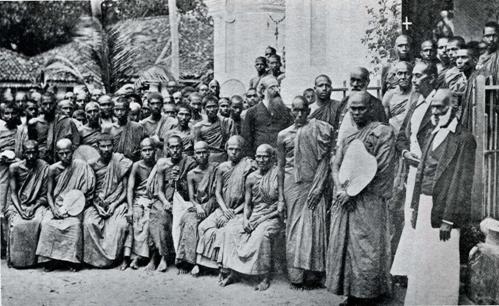This is the
so-called Buddhist Catechism, written in 1881 by Henry Steel Olcott, mostly
known as Colonel Olcott. While the Catechism is apparently still used in Sri
Lanka by Theravada Buddhists, Olcott himself was not an orthodox Theravadin,
but a co-founder with Madame Blavatsky of the controversial Theosophical
Society.
While the
Theosophists did promote Buddhism in Lanka and elsewhere, their own ideas were
really quite different and distinct from the Buddha´s religion as traditionally
understood. Little of this is visible in “The Buddhist Catechism”, though. Most
of it is standard Theravada Buddhism (“the Southern Church of Buddhism” in
Olcott´s words), with all the usual contradictions of this creed. There is an ecumenical attempt at bridging
the gap between Theravada and Mahayana.
There are also
some modern traits in the Catechism: idolatry and superstition are condemned,
women´s equality promoted, while Buddhism and science are said to be
compatible. Indeed, Buddhist parents are admonished to give their children a
scientific education. The former Spiritualist Olcott believes that miracles,
including those of the Buddha, can be explained in terms of parapsychology.
Some occult
ideas have sneaked in too – the Buddha´s strange ability to remember his past
lives (strange since Buddhism holds to “anatta” or “no-soul”) is explained in
terms of accessing the Akashic Chronicles. Olcott designed a Buddhist flag,
which is still widely used today, and since the flag´s color stripes symbolize
the colors of the Buddha´s aura, a section of the Catechism is devoted to
expounding on this theme.
In sum, “The
Buddhist Catechism” is a relatively good introduction to Buddhism, but with a
few Olcottian additions. Well, at least he didn´t mention the root-races,
rounds and Stanzas of Dzyan…

No comments:
Post a Comment